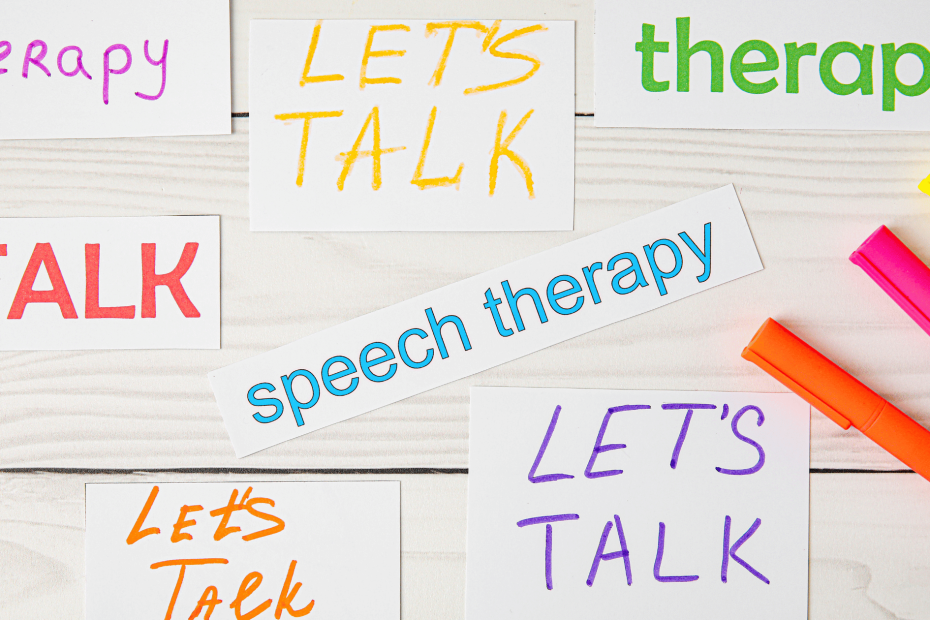As parents, we eagerly await each milestone in our child’s development, from their first smile to their first steps. Among these significant milestones is the emergence of speech and language skills, which play a vital role in communication and social interaction. However, there are times when parents may notice their child experiencing difficulties in this area. Identifying potential speech and language issues early on is crucial, as it allows for timely intervention and support, paving the way for improved communication abilities and a brighter future.
Here are some signs that may indicate a potential speech and language problem in a child:
- Delayed speech development: The child is not babbling, cooing, or saying single words by around 12 months of age.
- Limited vocabulary: The child has a significantly smaller vocabulary compared to peers of the same age.
- Difficulty forming sounds and words: The child struggles to pronounce certain sounds, experiences difficulty putting words together, or frequently leaves out or substitutes sounds in words.
- Lack of understanding: The child has trouble understanding and following simple instructions appropriate for their age.
- Poor articulation: The child’s speech is unclear or difficult to understand, even to familiar listeners.
- Stuttering: The child frequently repeats or prolongs sounds or syllables, experiences blocks or hesitations, or shows other signs of disfluency.
- Limited social interaction: The child has difficulty engaging in conversations or interacting with others appropriately for their age.
- Difficulty with storytelling and sequencing: The child struggles to tell coherent and organized stories, has difficulty describing events in the correct order, or has trouble understanding and using concepts like “first,” “next,” and “last.”
- Lack of eye contact and gestures: The child may have limited eye contact, reduced use of gestures, or difficulty understanding and using nonverbal communication.
Here are some examples of ideas to encourage your child with speech development:
Attention and Listening Skills
- Play a game of musical status – This encourages your child to listen for instruction.
- Tell silly stories – retell some familiar stories or nursery rhymes but insert a deliberate mistake e.g. Humpty Dumpty sat on a gate. Ask your child to say stop each time they hear a mistake, repeat the mistake back to you and then ask them to correct the statement.
- Copy Cat – Gather together a selection of instruments or if you have a xylophone play a tune saying the word first, next, last e.g. first I shake the shaker, next I hit the woodblock and last I tap the tambourine. Get your child to then copy the tune back to you then change the sequence. Let your child then develop the sequence and you copy them.
- Retelling Stories – Ask your child to help you with basic tasks around the home e.g. making toast. First, you put the bread in the toaster, next you butter the toast and last you eat the toast. Then ask them what the stages are in doing a task at home.
Language Activities
- Using teddies/dolls from around the house play together with your child to” wash” or “brush” the teddy’s body parts. Talk to your child about what you are doing so that the correct use of language is used e.g. “I am brushing teddys leg”. Encourage your child to listen carefully by using their name and when they are looking at you give them an instruction using three keywords e.g. “wash dolls hands”. To extend this activity encourage your child to say what they are doing and then let your child give you an instruction to follow prompting them to think about the language used.
- Look at books together and ask your child to describe what the characters in the book are doing e.g. The boy is running. Also, read a few sentences and then ask your child a question about what you have just read e.g. the blue ball bounced across the green grass – ask what colour the ball was to see if they have been paying attention.
It’s important to note that every child develops at their own pace, and occasional difficulties may not necessarily indicate a speech or language disorder. However, if you notice persistent or multiple signs of concern, it is advisable to consult with a speech-language pathologist or a healthcare professional who specialises in child development. They can provide a comprehensive evaluation and recommend appropriate interventions if necessary.
Related Blogs:
